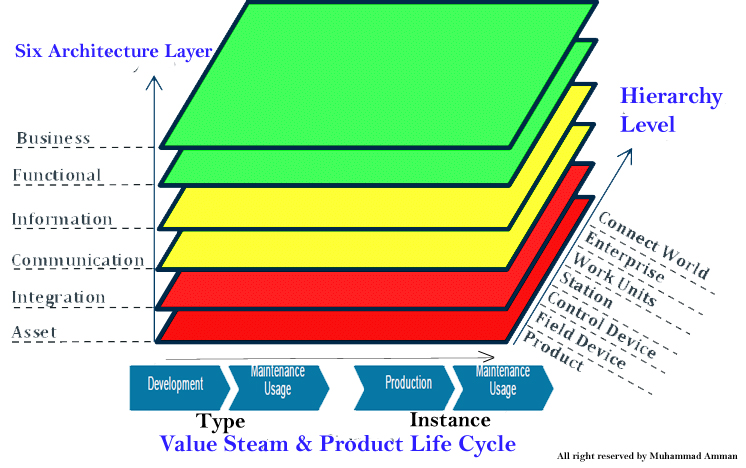RAMI 4.0 (Part 1): Smart Electronic Industry 4.0 Architecture Layers
After some research, this proposed layered smart industry architecture considers everything from business goals to edge devices.
Join the DZone community and get the full member experience.
Join For FreeI started my career in the IT-software industry as a programmer. I learned that the idea of software engineering had evolved into management theories and practices.
Technology Introduction
The technology that was introduced as a simple vacuum tube evolved progressively, like MRP. Later on, information systems witnessed the rise of ERP. That generation of technology could be phrased as a mother and her child, while always a family, having an increasing amount of distance amongst both of them.
Today, industrial automation has become a hot topic, as it connects mechanical engineering, supply chains, and information technology. Management sciences and management information systems became two separate entities with the passage of time. To bridge this gap, there came a new idea called Industry 4.0 — a smart services model based on tightly coupled business and information and communication technology.
When I chose the topic of Industry 4.0, it took me four months to understand the basic phenomenon. After a lot of tiring research on I4.0, I deem that what we know is a drop, and what we don't know is an ocean. However, I strived hard to get to know about its process and design. At last, I achieved a simple way to define its structure with an example in an easy manner.
Industry 4.0 comes into view as an advancement of the industrial revolution, making a wide utilization of the Internet and other technologies. In short, it involves the generalization of certain technological resources in the industry, which enables the communication between the two worlds: the physical and the digital one. Distinctively, it can be defined as the link between the physical and the digital worlds in order to turn conventional industry into a smart industry.
Reference Architecture Model
RAMI4.0 is a starting concept based on defined standards for industrial solutions. It brings together the vital elements of Industry 4.0 in a 3D layered model. This structure can be used to systematically organize and flourish Industry 4.0 technologies.
RAMI 4.0 has 3D layered comprises of:
Architecture axis (six layers)
Process axis (value stream process)
Hierarchy axis (hierarchy levels)

According to my approach, I defined the above layer in a real-time scenario. Well, let’s try to understand how the architecture axis layer works in an “electronic industry.” The layer architecture is referred to as ‘6 Layer’ or ‘2-axis layers’ or ‘vertical layers.’
The Architecture Axis consists of 6 layers:
- Asset
- Integration
- Communication
- Information
- Functional
- Business
Concept of the Architecture Layers
With the reference to the electronics industry, the Asset Layer describes physical components such as motors, machines, documents, software applications, spare parts, system users, customers, suppliers, service providers, or any other physical entity. In our case, it could be a mobile device, TV, smartphone, or laptop.
The Integration Layer deals with easy processing of information and can be considered as a link between the physical and digital worlds. As per my view, it could be system drivers, HMI devices, bridge wires, switches, hubs, as well as other tools like sensor readers to connect things.
The Communication Layer provides standardized communication between the integration and information layers. For instance, the role of communication is to transmit and receive data using TCP/IP, HTTP/ FTP protocols, transmission through LAN or WAN, and communicate through BLE (Bluetooth Low Energy) or Wi-Fi devices.
The Information Layer holds data in an organized way. The basic purpose of this layer is to give information about the total number of sales, purchase orders info, suppliers, and location info. It carries information about all products and materials that are manufactured in the industry. It also gives information on the machines and components that are used to build products. It gives information to customers and keeps their feedback. Information is software based, i.e. it might be in the form of application or data facts, figures, and files.
The Functional Layer is responsible for production rules, actions, processing, and system control. It also facilitates users as per product features like cloud services (restore/backup functionality). Moreover, it involves various other activities like coordination of components, system power on/off, testing elements, delivery channels, user inputs, and functions including, but not limited to, alert lights, snapshots, and touch screen and fingerprint authentication.
The Business Layer is composed of the business strategy, business environment, and business goals. Moreover, it deals with promotions and offers, target locations, advertisements, CRM, Budget and Pricing Model (e.g., buy 1 smartphone and get a free 32 GB SD card), and Manufacturing and Cost Analysis.
Conclusion
It is now obvious that it was easy to comparatively describe various layers of RAMI 4.0. It is also likely that an existing system description does not include all information for a complete RAMI 4.0 model. Still, the RAMI 4.0 layers are under discussion on various factors like a work breakdown structure of entities their roles and operations. Another important component under process is “Security”. I am very much interested in receiving your remarks, questions, and suggestions. Keep in touch with me for defining of the next phase called the second Axis of “Product Lifecycle and Value Stream.”
Opinions expressed by DZone contributors are their own.

Comments